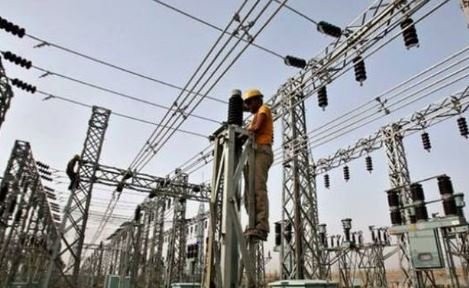NLC, MAN kick as DisCos increase electricity tariffs

A NEW electricity tariff regime has commenced following the adjustment of rates by Power Distribution Companies (DisCos).
Tuesday’s commencement of the new rates followed the approval of the Multi Year Tariff Order (MYTO) 2020 by the Nigerian Electricity Regulatory Commission (NERC).
An attempt by the DisCos to adjust the tariff in July was shelved following an outcry which led to Federal Government’s intervention.
The Eko Electricity Distribution Company (EKEDC), the Ikeja Electricity Distribution Company (IE), the Abuja Electricity Distribution (AEDC), The Enugu Electricity Distribution Company (EEDC), the Ibadan Electricity Distribution Company (IBEDC), the Kaduna Electricity Distribution Company (KEDCO) and the Benin Electricity Distribution Company (BEDC) have started implementing the new rates.
The DisCos said the new rates are categorised by the number of hours the customers are supplied electricity.
According to them, rates charged are fair to customers and will guarantee full recovery of efficient cost of operations and reasonable rate of return on capital invested by the power firms.
They said the new rates will provide a path for transition to full service-based cost-reflective tariffs by July 2021.
Labour yesterday kicked against the rates adjustment, saying: “It is dead on arrival.” It vowed to shoot it down.
The Manufacturers Association of Nigeria (MAN) said the action will add to cost of production with the attendant implication for the consumers.
The Organised Private Sector (OPS) will meet tomorrow to take a position on the matter.
But the Lagos Chamber of Commerce and Industry (LCCI) said the adjustment is inevitable.
Head of Communications of the EEDC, Emeka Eze, said the tariff increase was approved by the NERC and not a unilateral decision by the company.
EKEDC General Manager, Corporate Communications, Mr. Godwin Idemudia, explained that the new tariff will not affect customers that enjoy less than 12 hours of electricity supply.
He said it had been designed to ensure that customers pay tariffs that are commensurate with power availability and service delivery.
The IE said the new order has clustered customers into five Tariff Service Bands and revised the tariff payable by customers based on quality of service.
“This is measured by the average availability of power delivered over a month period; factoring the frequency and duration of interruptions and other service parameters. The order shall remain in force until a new MYTO Order is issued. In the interim, the tariffs for customers in Bands D and E (customers with less than 12 hours supply) shall remain frozen until there is improvement in service levels. In other words, the old tariff for customers in Bands D and E shall be maintained until Ikeja Electric improves the quality of service to this category of customers.”
According to the AEDC, those in category A are people with power supply for up to 20 hours; B (16 hours), C (12 hours), D (8 hours) and E (four hours). While non-MD of the AEDC pays N49.75 per kilowatts, the MD-1 N67.70, MD 1: N67.70, MD N53.05. They are referred to as Maximum Demand Customer and Non-Maximum Demand Customers.
The AEDC noted that the C1 will now pay N37.39 , C2 N47.09 and C3 N47.09. Until yesterday, they paid as follows: C1 N36.65, C2 N46.23 and C3 N46.23 per kilowatts.
The R3 and R4 that paid N46.23 will now pay N47.09 per kilowatts.
The energy distributor explained that “the Service Reflective Tariffs (SRT) plan is a NERC-mandated tariff structure whereby an upward increment in tariffs will result in substantially longer hours of power supply, good quality voltage profile, swifter response to faults clearing and provision of pre-paid meters.”
KEDCO said the new tariff will reflect in it bills from this month.
Head, Corporate Communication, Abdulazeez Abdullah, told The Nation ”the tariff is long overdue. Therefore, it has to start immediately after the presidential directive.”
Abdullah added: “Yes, the implementation has started, the National Electricity Regulation Commission (NERC) has given directive to that effect. So, by the end of this month, those who don’t have meters will see the new tariff reflecting and also those who are buying electricity token will have it reflected.
“As you know, this is something that is long overdue; it was supposed to start in July, but National Assembly intervened at the last minute to postpone it, and now, the President has said it has to start, so we have started.” Abdullahi said.
The AEDC General Manager, Corporate Communications, Mr. Oyebode Fadipe noted that, ‘The new tariff design proposes an upwardly adjusted tariff for customers who are not averse to paying more to enjoy longer hours of supply, standard voltage profile and faster fault clearance timelines.’
The President, Nigeria Consumer Protection Network, Mr. Kunle Kola Olubiyo urged the Federal Government to change the pricing methodology of gas.
He said since the companies have spared the Residential Customers and urban poor of the hike, stakeholders must address the over- priced gas issue while the DisCos implement the new tariff. Gas, according to him, constitutes about 80 per cent of the electricity tariff components. He explained that the same gas accounts for over 70 per cent of Nigeria’s energy mix. He said the government can crash the tariff by addressing the disparity and volatility of gas.
Director General LCCI, Dr Muda Yusuf, said for Nigeria to get investments in the energy sector, she cannot run away from cost-reflective tariff.
He said: “lt is important to inspire the confidence of electricity consumers through a robust metering programme and guarantee of value for money. Cost-reflective tariff is a difficult option, especially given the prevailing economic conditions. But it is the most sustainable option that would salvage the power sector and attract investment”.
Dr. Yusuf said there must be fixing of the numerous inefficiencies that characterize the entire power sector value chain for the new policy to make an impact. (The Nation)

